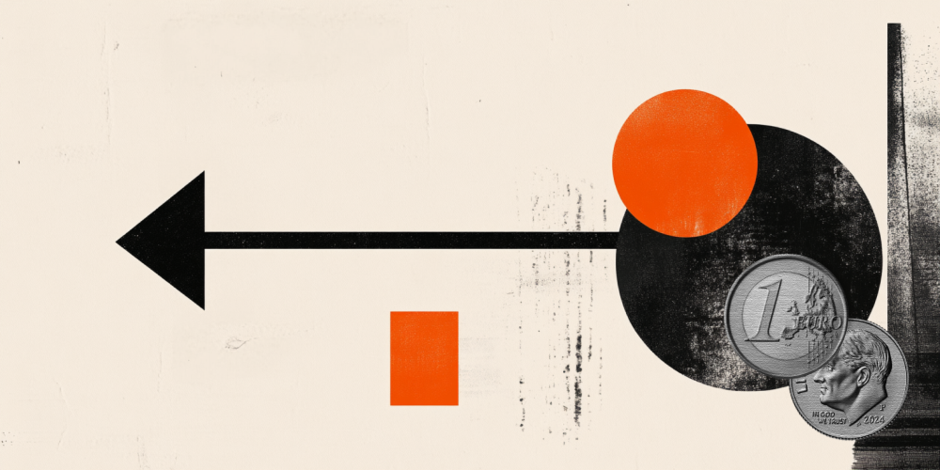EUR/USD Weekly Forecast: The ECB and the Fed will test the recent upside
- EUR/USD manages to surpass the 1.0500 barrier, or five-week highs.
- The US Dollar comes under further downside pressure on US tariffs, China.
- The ECB is widely anticipated to trim its policy rate by 25 basis points.

The Euro (EUR) maintained its optimism against the US Dollar (USD) in the latter part of the week, briefly surpassing the key barrier at 1.0500 the figure to reach five-week highs on Friday.
On the other side of the equation, the Dollar’s offered stance only accelerated, sending the US Dollar Index (DXY) to as low as the 107.30 zone, a region also coincident with the provisional 55-day SMA.
The pair’s weekly recovery has aligned with a similarly strong rebound in German bund yields and US yields, particularly in the belly and the long end of the curve.
Furthermore, the Greenback’s lacklustre performance occurred alongside improving sentiment in risk-sensitive assets, as well as ongoing speculation and a lack of clarity surrounding President Donald Trump’s potential trade tariff proposals.
Central banks remain in focus
As we enter the upcoming week, monetary policy is expected to continue to play a pivotal role in steering market sentiment.
In the US, a strong December jobs report initially bolstered confidence in the Federal Reserve’s (Fed) ability to manage the economy. However, with inflation still hovering above the bank’s 2% target, expectations have shifted. Markets now anticipate the Fed could lower rates by only 25 to 50 basis points in 2025.
Anticipating the January 28-29 FOMC gathering, market consensus has almost fully priced out a rate reduction.
Still around the Fed, Chair Jerome Powell has emphasised the challenge of balancing inflation control with economic growth. While acknowledging signs of a cooling labour market, Powell underscored the importance of keeping inflation expectations anchored.
Across the ocean, the European Central Bank (ECB) is on a different trajectory. The ECB is broadly expected to cut rates next week as policymakers, including President Christine Lagarde, stressed the importance of a cautious, step-by-step approach. The ECB is balancing its commitment to reducing rates against the risks of undershooting inflation targets or destabilising the Euro (EUR).
Trade tensions add to uncertainty
Adding another layer of complexity, President Trump’s proposed trade tariffs remain a wild card. If enacted, these tariffs could drive US inflation higher, potentially forcing the Fed to maintain a hawkish stance. This would likely strengthen the Dollar further, putting additional pressure on the single currency (and its risky peers) and possibly reviving concerns about a return to parity for EUR/USD.
EUR/USD: Where do we stand?
It seems the spot has managed to put further distance from recent cycle lows near 1.0180. Against that backdrop, key support levels include 1.0176 (the year-to-date low from January 13), ahead of the psychological 1.0000 mark. On the upside, resistance can be found at the 2025 high of 1.0514 (set on January 24), prior to the December 2024 top of 1.0629.
The broader bearish outlook should persist as long as EUR/USD trades below the 200-day SMA at 1.0771.
Momentum indicators offer a mixed picture. The RSI is improving past the 60 level, underpinning the recovery potential, but the ADX has dipped to around 27, suggesting weakening trend strength.
EUR/USD daily chart
Challenges ahead
The Euro faces significant headwinds in the weeks ahead. A resilient US Dollar, diverging monetary policies, and ongoing economic struggles in the eurozone present a tough environment. German growth concerns and political uncertainties within the bloc only add to the pressure.
While the Euro could see short-term bounces, sustained gains are unlikely unless there’s a meaningful shift in the current economic or monetary policy landscape.
ECB FAQs
The European Central Bank (ECB) in Frankfurt, Germany, is the reserve bank for the Eurozone. The ECB sets interest rates and manages monetary policy for the region. The ECB primary mandate is to maintain price stability, which means keeping inflation at around 2%. Its primary tool for achieving this is by raising or lowering interest rates. Relatively high interest rates will usually result in a stronger Euro and vice versa. The ECB Governing Council makes monetary policy decisions at meetings held eight times a year. Decisions are made by heads of the Eurozone national banks and six permanent members, including the President of the ECB, Christine Lagarde.
In extreme situations, the European Central Bank can enact a policy tool called Quantitative Easing. QE is the process by which the ECB prints Euros and uses them to buy assets – usually government or corporate bonds – from banks and other financial institutions. QE usually results in a weaker Euro. QE is a last resort when simply lowering interest rates is unlikely to achieve the objective of price stability. The ECB used it during the Great Financial Crisis in 2009-11, in 2015 when inflation remained stubbornly low, as well as during the covid pandemic.
Quantitative tightening (QT) is the reverse of QE. It is undertaken after QE when an economic recovery is underway and inflation starts rising. Whilst in QE the European Central Bank (ECB) purchases government and corporate bonds from financial institutions to provide them with liquidity, in QT the ECB stops buying more bonds, and stops reinvesting the principal maturing on the bonds it already holds. It is usually positive (or bullish) for the Euro.
Premium
You have reached your limit of 3 free articles for this month.
Start your subscription and get access to all our original articles.
Author

Pablo Piovano
FXStreet
Born and bred in Argentina, Pablo has been carrying on with his passion for FX markets and trading since his first college years.

















